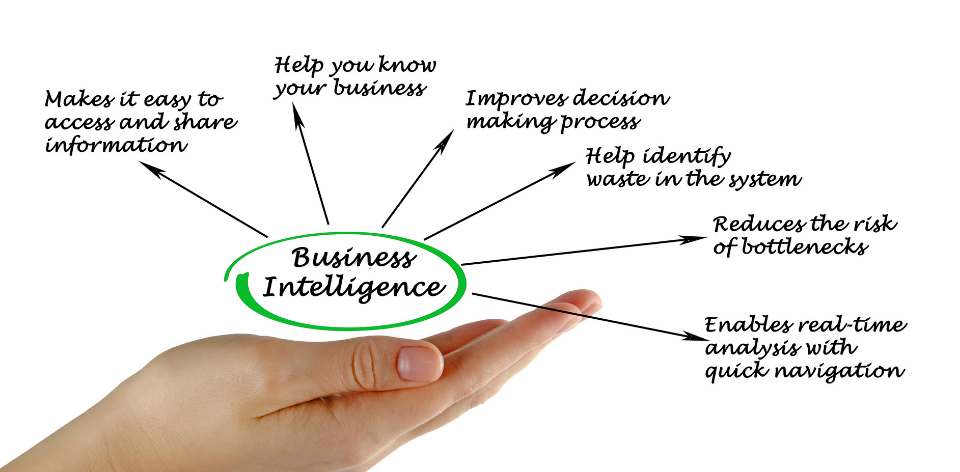
Businesses need to gather information from all sources. This is not only to build up a solid understanding of their business but to aid in decision-making. Gathering this information will also provide insight into organizational processes and the people who are running those processes.
This will help businesses become better organized and more effective. In addition to gathering information, it’s also important to retrieve it quickly and put it to use.
Step One: Ensure you’re collecting relevant data.
Data needs vary greatly from one organization to another depending on their specific goals. Before spending time or money implementing any new technologies into decision-making processes, make sure you know what types of questions need answering upfront. A Business Intelligence System (BIS) with data entry features can help you to start collecting that data.
Step Two: Outline what available data you have.
Once you have the relevant data, it’s important to start taking a closer look at it. This means digesting what is available and then further distilling it into a more manageable form. Often, this can be done by sorting data into categories or through the use of pivot tables and charts.
Step Three: Define how you’ll define success.
Business intelligence is not just about finding answers; it’s also important that users understand how their performance impacts the overall business as well as how they can improve upon current processes for increased productivity and profitability.
Step Four: Improve your information architecture.
The goal of improving the information architecture of Business Intelligence (BI) is to provide a structure for the data that will make it easier to find, understand, and use. The first step is to gather all of the data and put it into a central location. This can be done in a number of ways, such as creating a data warehouse or adopting a document management system, such as Paradigm Interactive’s VisualApps Suite™.
Once the data is centralized, it is important to organize it in a way that makes sense. This can be done by creating categories or folders, or by using tags. The idea is to make it as easy as possible to find the information you need when you need it.
Step Five: Make sure you have the necessary resources in place.
As any good IT professional knows, when it comes to technology projects there are never enough qualified resources available. Even if your organization has all the best intentions of how they plan on using this data once collected and organized, finding time during already busy workdays for BI initiatives can be difficult without adding more bodies to an existing workload. So, it is important to have the right people and a BI partner that can help you. It’s worth noting that utilizing a BI tool with automation features can also help you reduce the strain on your teams.
Step Six: Assign accountability.
Data is only useful if someone takes ownership over its collection, accessibility, and overall use within decision-making processes across departments. No matter how much information exists or how quickly it becomes outdated, if no one steps up to take responsibility then most likely nothing will ever get done with that data.

Step Seven: Develop a strategy for implementation.
Having access to all this data is useless if your organization can’t figure out how best to use it for decision-making processes.
Business Intelligence (BI) is the process of transforming data into actionable knowledge. In order to effectively implement BI in an organization, it is important to develop a strategy for doing so. The following steps can help you create such a strategy:
1. Assess your current data landscape. This includes understanding what data you have, where it is located, and how it is currently being used.
2. Establish business requirements. This involves identifying the specific needs and goals that you hope to achieve with BI.
3. Define your target audience. Determining who will be using the BI tools and what they will be using them for is critical in ensuring that the tools are effective and meet everyone’s needs.
Step Eight: Establish a timeline.
Setting realistic short-term goals is key to a successful business intelligence initiative. In the short term, your team should focus on meeting specific objectives and gathering the data necessary to make informed decisions. medium-term goals should include developing a strategy for implementing your findings and long-term goals should be focused on sustaining the improvements you have made.
Step Nine: Get management buy-in and funding.
A strategy/roadmap is only as good as how well the organization plans on following through with its implementation. This process may require a significant amount of time and resources from individuals across departments. Without some form of executive backing, there’s little chance these initiatives will get very far off the ground.
Step Ten: Communicate your findings.
When it comes to business intelligence, it’s essential to be able to share your findings with others in a way that is easy to understand. One way to do this is by using data visualization. Data visualization involves the use of graphs, charts, and other images to represent data. This makes it easy for people to see patterns and trends in the data.
Another way to communicate your findings is by writing reports. Reports should be clear and concise and should include all the relevant information. It’s also important to make sure that your reports are easy to read.
Finally, you can also use presentations to communicate your findings. Presentations should be well organized and should include a variety of different types of information. It’s also essential to be clear and concise when giving a presentation so that all the important information can be easily understood.